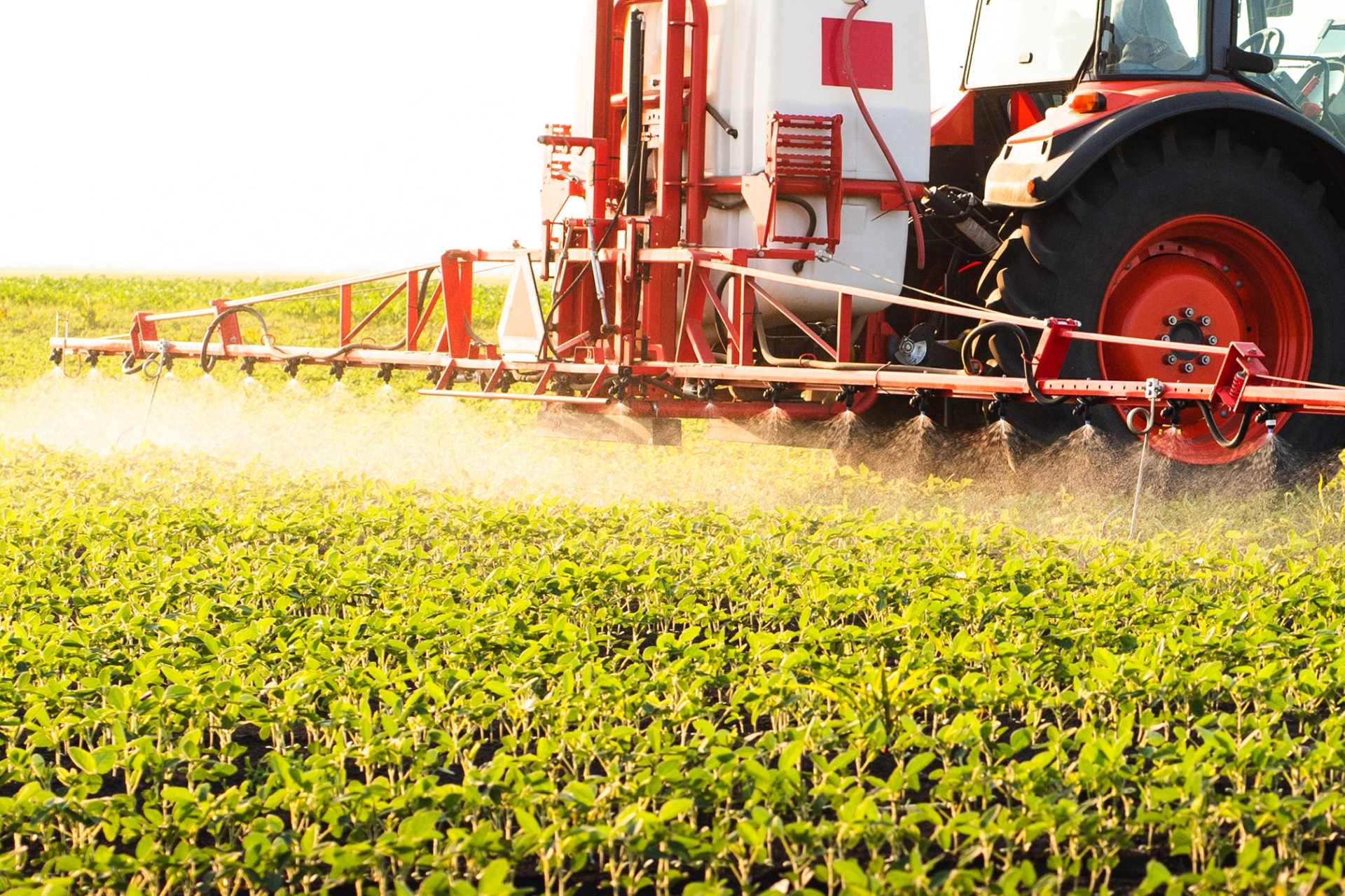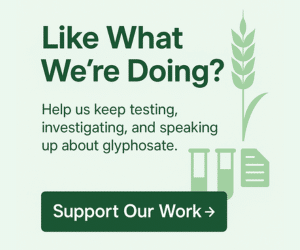With glyphosate’s dominance shaken by Bayer’s likely withdrawal, the big question isn’t just what replaces it — it’s whether the replacement is any better.
It’s been more than a decade since the first lawsuits linked Roundup® to cancer — and in that time, the legal, financial, and reputational toll on Bayer has snowballed.
Now, in what many see as an inevitable turning point, Bayer has begun retreating from the glyphosate market. The company pulled glyphosate from U.S. home-garden products in 2023, and in early 2025, warned U.S. lawmakers it may stop agricultural sales too, unless granted legal protection from future lawsuits.
While a full global withdrawal hasn’t yet happened, it’s increasingly clear: glyphosate’s days as the world’s most used weedkiller are numbered.
If glyphosate was the keystone holding up decades of industrial farming practices, what fills the void if it falls? And more urgently, is the “solution” already being sold to us just another version of the same problem?
Back in May, we explored the implications of Bayer’s potential glyphosate exit for agriculture in New Zealand and beyond. Now we take the next step, diving deeper into what’s actually replacing glyphosate — from new chemical formulations to so-called regenerative fixes — and why some of them may bring new risks we’re not ready for.
Because this was never just about one product. It’s about a system. And the deeper we dig, the more it looks like that system is being quietly patched — not transformed.
Glyphosate Wasn’t Just a Weedkiller — It Was a Crutch
To understand what happens when glyphosate goes, we first have to understand what it enabled.
Glyphosate wasn’t just a popular herbicide — it was the backbone of a farming system built on chemical convenience. Cheap, broad-spectrum, and easy to use, it became the go-to tool for controlling weeds in almost every phase of crop production. It was used before planting, between crop cycles, and — in some countries including New Zealand — even right before harvest to dry down crops like wheat, oats, and legumes.
This widespread adoption made farming more predictable. More scalable. More profitable. But it also made many farms dependent — not just on glyphosate itself, but on the whole system it made possible: fewer tillage passes, fewer labour inputs, faster turnaround between crops.
When you take that out, you’re not just removing a tool — you’re exposing a dependency built into the whole system.
Which is why the rush to find a “replacement” isn’t just about weed control. It’s about protecting yields. Preserving efficiency. And, in many cases, preserving the illusion that chemical shortcuts can continue indefinitely — just with a new name on the label.
So the question isn’t just what replaces glyphosate. It’s how we’re approaching that replacement — and whether the new solutions are any more sustainable, safe, or transparent than the old one.
So What’s Replacing It?
If glyphosate really is on the way out — slowly, quietly, maybe even reluctantly — what’s waiting in the wings to take its place?
The short answer? It depends who you ask.
For chemical companies, the solution looks a lot like… more chemistry.
For government regulators, it’s often about managing risk on paper, not reducing it in practice.
And for farmers, many of whom have relied on glyphosate for decades, the answer is less about innovation and more about trying to maintain what they already have — yields, margins, efficiency.
Let’s break it down.
Substituting One Chemical for Another
Bayer’s own solution to glyphosate’s public relations crisis? A new generation of herbicides like icafolin — a compound currently working its way through international regulatory approvals. Promoted as a “novel mode of action.”
It’s already been provisionally greenlit in Australia, though critics argue that this fast-tracked process raises more questions than it answers. The data driving that approval largely comes from the manufacturer itself, and long-term health or environmental impacts have yet to be independently assessed.
But as we explored in Part 1 and Part 3, that story has layers. Icafolin may avoid some of glyphosate’s specific baggage, but it’s still a synthetic chemical designed to disrupt plant growth — and long-term health and environmental risks are far from fully understood.
Other contenders include glufosinate, dicamba, and 2,4-D — older chemistries dusted off and reformulated for modern use. But these come with their own red flags: increased toxicity, volatility, and higher potential for environmental drift and crop damage.
In many cases, the replacements being rolled out are more dangerous than the chemical they’re intended to replace.
Turning to Mechanical and Tech-Based Workarounds
Some farmers are returning to mechanical weed control: tillage, hoeing, inter-row cultivation — often paired with precision tech like robotic weeders, AI-guided sprayers, or even flame and steam weeding systems.
They may suit small to mid-scale operations but are difficult to scale across vast monocultures without major system redesign.
Shifting Toward Agroecological and Regenerative Models
On the more hopeful end of the spectrum are agroecological systems that don’t look for a one-to-one chemical replacement, but instead reimagine the system:
- Cover cropping to suppress weeds naturally
- Crop rotation to disrupt weed lifecycles
- Mulching and pasture cropping
- And perhaps most importantly: rebuilding soil health so that weeds are less opportunistic in the first place
But here’s the rub: these approaches take time and don’t offer quick fixes. They require knowledge-sharing, training, and often a fundamental shift in priorities — away from chemical dependency and toward long-term resilience.
And that’s a shift some industry players would rather avoid.
The Danger of Regrettable Substitution
It’s a pattern we’ve seen before.
A chemical gets challenged. Public trust erodes. Lawsuits pile up. Regulators finally flinch. And just when a ban or phase-out seems inevitable — a “solution” appears.
But the solution often comes from the same playbook: another synthetic chemical. Slightly different structure. New branding. Fresh marketing campaign. And maybe, if we’re lucky, fewer headlines — at least for a while.
This cycle has a name: regrettable substitution — and it’s one of the most persistent failures in chemical regulation. Rather than truly breaking with harmful practices, industries simply replace one problematic substance with another that hasn’t yet been scrutinized. Think BPA and BPS. PBDE flame retardants and their “safer” cousins. Neonicotinoids and sulfoximines. And now, glyphosate and… what, exactly?
Icafolin? Dicamba? Glufosinate? Whatever it is, the question isn’t whether it kills weeds — it’s whether it avoids repeating (or even amplifying) the harms we’re already dealing with.
The problem isn’t just the chemical — it’s the mindset.
A rush to preserve the system.
A refusal to step back and ask whether the system itself is what needs replacing.
It’s not just about swapping what’s in the tank — it’s about rethinking the thinking that got us here.
Because if we don’t ask better questions now — about how we farm, not just what we spray — we risk locking ourselves into another chemical dependency. One that future generations will be left to clean up.
Where This Leaves New Zealand
New Zealand may be a small player in the global agrichemical market, but we’re deeply entangled in its consequences.
We import glyphosate-based products by the tonne. We allow them to be used across a wide range of crops — including for pre-harvest desiccation on cereals, legumes, and oilseed. We permit residues in our food at levels that have quietly risen over time. And we’re only just beginning to confront what that might mean for our health, our soils, and our export reputation.
So what happens if glyphosate loses its social licence faster than expected?
Are we prepared? Or are we sleepwalking into another dependency — one we understand even less than the last?
Because right now, the signs aren’t great.
We’ve already seen regulators propose raising Maximum Residue Limits (MRLs) to reflect “new agricultural practices” — not to protect health, but to accommodate expected increases in glyphosate residues. While MPI ultimately walked back most of those proposals on 30 October 2025 — maintaining current limits for wheat, barley, and oats — it still approved a significant increase for dried peas, moving from 0.1 mg/kg to 6.0 mg/kg. That single change alone raised major concerns, especially as pre-harvest glyphosate use on food crops was supposed to be reconsidered.
So while the public pushback clearly had an impact, the overall direction of policy remains troubling: still reactive, still accommodating chemical convenience — and still silent on any long-term strategy to reduce glyphosate use.
We’re seeing minimal investment in low-chemical alternatives, and next to no public funding for agroecological research.
And we’re still lacking meaningful transparency — no routine residue testing in food, no public disclosure of usage data, and no national strategy for reducing herbicide reliance.
Meanwhile, our exporters are walking a tightrope.
Markets like the EU and Japan are tightening standards. Glyphosate residues are already a barrier to trade in honey, cereals, and plant-based wellness products. One scandal — one bad batch — could have ripple effects far beyond the farm gate.
So where does that leave us?
Clinging to a chemical that the rest of the world is starting to back away from.
Or scrambling to replace it with something newer, faster, and possibly more toxic — just to keep the wheels turning.
Looking Ahead — or Just Looking Away?
Glyphosate may not be disappearing overnight. Bayer hasn’t pulled the plug globally, and here in New Zealand, regulators are still walking a cautious line — backtracking on some MRL increases, holding the line on others, and avoiding a full reassessment entirely.
But the direction of travel is clear: glyphosate is no longer a guaranteed constant in the future of farming. It’s a risk. A liability. A public relations crisis waiting to resurface — and the cracks are only growing wider.
And yet, in all the noise about what to replace it with — new herbicides, smarter sprayers, regenerative tweaks — we’re still not asking the bigger questions.
- Why have we built a food system so dependent on a chemical that regulators now need to shield with PR spin?
- Why is “no health risk” the fallback response when real-world exposure, cumulative load, and independent science tell a more complicated story?
- Why did our regulators propose raising glyphosate residue limits — not based on new safety data, but to match how much is now being used?
- Why has a full reassessment been stalled for over a decade, despite growing global concern?
And most urgently: what kind of farming future are we being sold — not beyond glyphosate, but still in its shadow?
Because replacing a chemical is easy.
Replacing a broken system — that’s harder.
But that’s also where real change begins.
This article is Part 4 of our mini-series exploring what’s replacing glyphosate — and whether those so-called solutions hold up under scrutiny. See the full series below.
Further Reading:
What Replacing Glyphosate Reveals About the System
This article is part of a growing body of work examining not just what’s replacing glyphosate — but how the failures in oversight, accountability, and policy continue to shape the way we regulate toxic chemicals in New Zealand. Below are two related mini-series: one tracking the chemical substitution story, and one exploring the deeper systemic breakdowns that allowed it all to happen.
Here’s where to start:
Mini-Series 1: The Glyphosate Replacement Dilemma
Part 1: Icafolin: The New Glyphosate Alternative or More of the Same?
A first look at Bayer’s proposed alternative — and why “novel mode of action” doesn’t mean novel oversight, transparency, or safety.
Part 2: The Desiccation Dilemma: Why Glyphosate’s Real Role Is Hard to Replace
Pre-harvest spraying wasn’t an afterthought — it was central to modern agriculture. So what happens when it’s finally questioned?
Part 3: What Makes Icafolin Different from Glyphosate?
A breakdown of Icafolin’s chemistry, regulatory status, and the uncomfortable similarities it still shares with the problem it claims to solve.
Part 4: You are here — What Happens After Glyphosate? A System Under Scrutiny
Mini-Series 2: System Failure — How We Got Here
Part 1: The PCE’s Warning We Ignored
New Zealand’s Parliamentary Commissioner for the Environment rang alarm bells about our outdated chemical oversight. No one acted.
Part 2: What the Consultants Found About Monitoring Gaps
Independent consultants were paid to map out the cracks in our system. Their findings were quietly shelved.
Part 3: The Reforms That Never Landed
A rare window to fix the system opened. Instead of meaningful change, we got another round of missed opportunities.
Related articles:
What Changed After NZ’s Glyphosate Submission Process?
A breakdown of MPI’s October 2025 decision — what changed, what didn’t, and why a small win on paper doesn’t mean the bigger fight is over.
Bayer’s Glyphosate Exit — What It Means for Agriculture
Our May 2025 article that first mapped the implications of Bayer’s slow retreat and what it might mean for food systems — especially here in New Zealand.
If we’re serious about change, we can’t stop at banning a product. We have to rebuild the systems that allowed it to dominate in the first place — and that means asking harder questions, not just about what we spray, but about who’s deciding why.
Image Source & Attribution
We’re grateful to the talented photographers and designers whose work enhances our content. The feature image on this page is by fotokostic.




